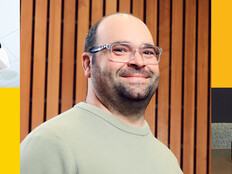Colleges See the Benefits of Remote Labs
Growing interest in massive open online courses (MOOCs) may be partially responsible for renewing interest in remote labs — frequently called iLabs — for online students.
Remote labs allow students to conduct experiments with real equipment placed online. The concept actually got its start at Stanford University and MIT in the 1990s, when the Internet first boomed. Despite some genuine interest and early excitement, remote labs never quite took off as a staple in higher ed, primarily because the cost to build them was prohibitive. Now, new technology and recent efforts at Stanford University and Northwestern University are uncovering ways to bring remote labs into the mainstream.
Lambertus Hesselink, a professor of electrical engineering at Stanford, and a group of graduate students have been working for some time to remove barriers to entry (for many institutions, barriers include the cost of automating the labs, setup time and staffing needs).
Last summer, Hesselink and two researchers performed an optics diffraction experiment that consisted of two lasers, a diffraction grating and multiple lenses that fit into a small (10x10x20-inch) shoebox. As they ran the tests, standard LabView software ran in tandem with a digital camera, taking pictures of the experiments. The images and digital files were annotated and stored on a file server and a database. (The database was created by the "Automator," software Hesselink developed to reduce the effort required to develop an iLab.)
Once the lab is made available publicly later this year, online students will be able to readily replicate the experiment by logging in to the database to use what Hesselink calls "The Visualizer" — software that allows students to run experiments from the database created by the Automator. (The results of Hesselink's experiment will appear later this year in the article "Small Personal On-Line Courses (SPOCs) using Massively Scalable iLabs," published by the IEEE Transactions on Learning Technologies journal.)
Keeping It Relevant
When Hesselink and his team of researchers began their tests, one of the main goals was to open the remote lab to students taking MOOCs. As more MOOCs reported low completion rates, Hesselink says he started to sour on the MOOC concept. He looked instead to develop a Small Personal Online Course, or SPOC.
"You can't really have a good dialogue with 100,000 students," he says. "I always found that the best learning experiences happen in small groups."
Hesselink's concept for a SPOC centers on a small group of students doing online experiments on the remote labs, under the supervision of a teaching assistant. The group could then set up a page online, where they can be rated or graded by the TA or share their results with fellow students, at their own institution and any other college or university.
"Over time, a group of expert TAs would develop, students could share discussions with their peers and a large number of small communities would form around any given topic," Hesselink says.
The amount of money the National Science Foundation has funded to bring remote labs to high schools around the country
SOURCE: The National Science Foundation
At Northwestern, Kemi Jona, a research professor of learning sciences and computer sciences, wants to extend the remote labs concept to high schools.
"This would open it up to many more students who wouldn't otherwise have the opportunity to do hands-on experiments," Jona says.
Earlier this year, he and his team worked closely with schools in the Chicago area, including Evanston Township High School, to develop a prototype. Northwestern's Office of STEM Education Partnerships' iLab Network will broaden K–12 access to equipment housed at universities and other research labs, supporting STEM regionally as well as globally.
"We're working with the teachers to develop the software interfaces and curriculum for remote labs that would be geared to high school students," Jona says.
Setting Up a Remote Lab
Hesselink and Jona shared several best practices for institutions or high school districts looking to get involved with or set up their own remote labs.
Don't reinvent the wheel.
Leverage existing software tools and platforms to save time and cost, as well as prevent duplicate efforts. Stanford's Automator, for example, will eventually be available for free to anyone with an Internet connection, Hesselink says (start online at ilabcentral.org).
Look for existing instrumentation equipment.
Jona says one real barrier to entry is finding instruments that are available and capable of being used or put online. Northwestern officials started by setting up a relationship with the University of Queensland in Australia, which already had successfully placed remote lab equipment online. When Jona's team moved to put an X-ray Diffraction lab online at Northwestern, they deployed an older model that was underutilized. "It may not have been the most up-to-date machine, but it served our needs," he says.
Identify the institution's high-need areas.
One way to get administrators on board with the remote lab concept is to find ways to make use of them locally, Jona says. Introductory courses with large enrollments are good options because many students are required to take them. Doing so also will increase the range of laboratory experience for those students enrolled in such courses.
Set expectations.
Students and professors alike should know just what to expect from a remote lab. Communicate a schedule for when sessions are available, how long the queue of experiments is and when results can be expected. "The great thing about remote labs is that students can leave and then pick up the experiment where they left off, but they still have to know when the lab is available," Jona says.
Budget for proper staffing and technology needs.
Downloading Stanford's "Automator" software will save money once it's available, and most science students probably already have a copy of LabView. Institutions can also leverage equipment they already own, as Northwestern did. When it comes to computing, institutions can get started with a server, then set up virtual machines to run experiments and store the data. A part-time programmer or graduate student could be budgeted to perform the initial setup, Jona says.









